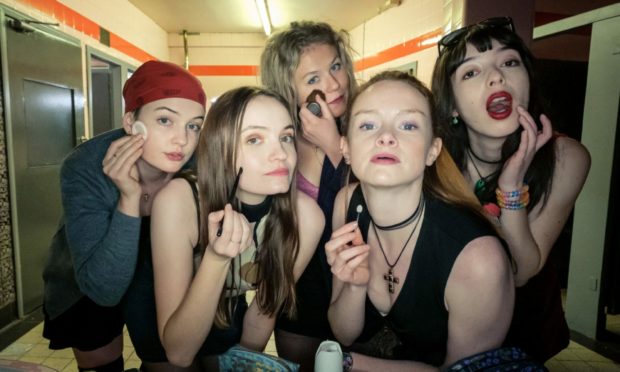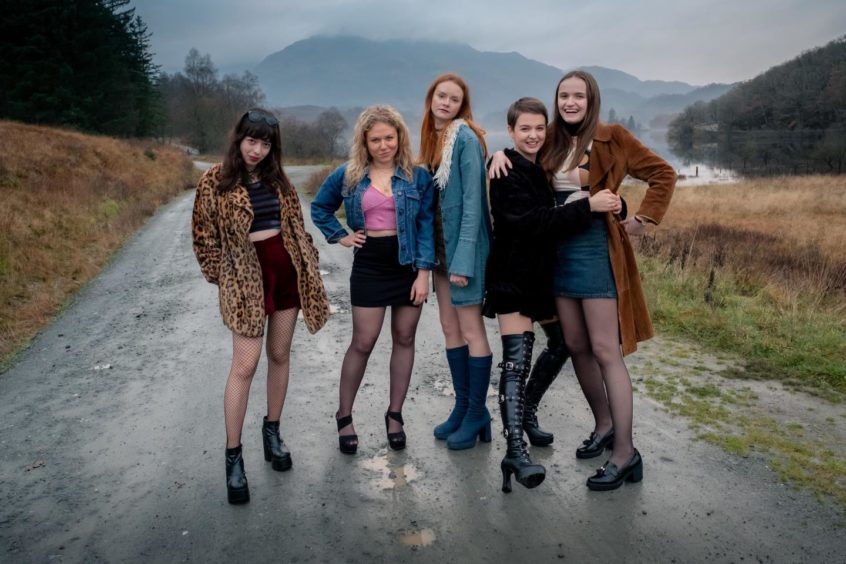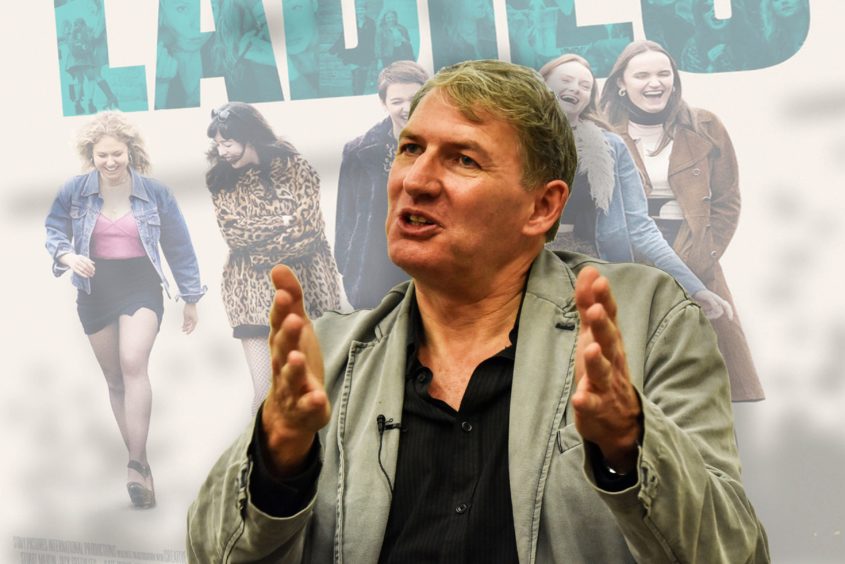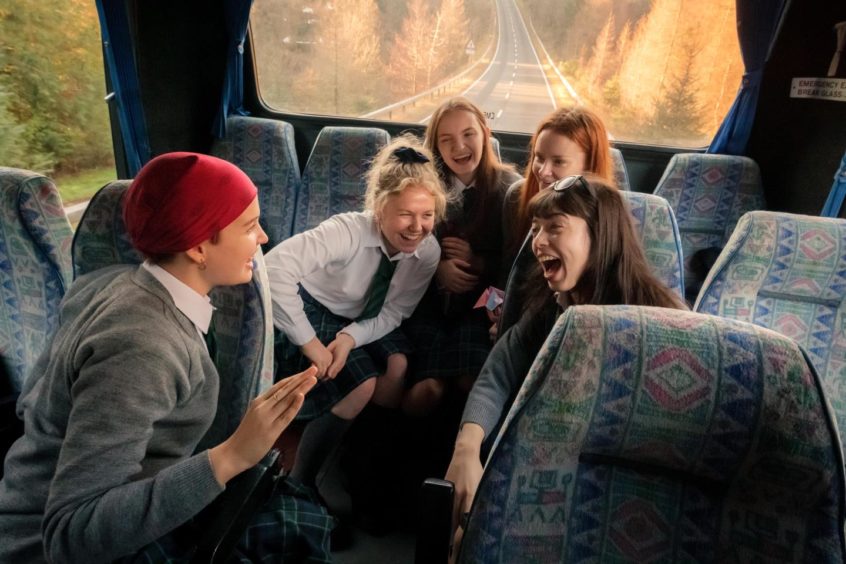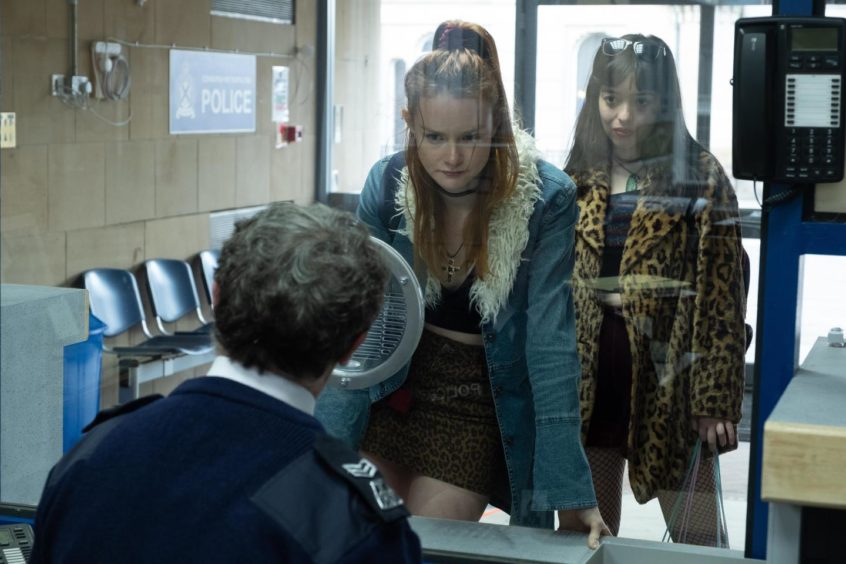It began life as a book called The Sopranos in the 1990s: an evocative coming-of-age saga about a group of teenage girls travelling from Fort William to Edinburgh and having their eyes awakened to the big bad world.
And now, more than 20 years later, Alan Warner’s acclaimed novel has finally been adapted for the cinema in the new film Our Ladies which follows the choirgirls of Our Lady of Perpetual Succour on a day trip from the Highlands to the Scottish capital.
The movie doesn’t pull its punches in responding to the challenges faced by females as they progress from adolescence to adulthood.
It tackles, often with raucous good humour, gloriously profane language and earthy discussions, such topical issues as sexuality, pregnancy, class difference and the tumultuous path of true friendship.
In the wrong hands, the film might have descended into stereotypes. But, given the masterful direction of Michael Caton Jones (who co-scripted the adaptation with Alan Sharp) and terrific performances from Aberdeen-born Abigail Lawrie, Eve Austin, Tallulah Greive, Sally Messham, Rona Morison and Marli Siu from Forres, the end result is rather like The Proclaimers meeting The Commitments with a contemporary dash of Fleabag thrown in for good measure.
It’s the culmination of a lengthy gestation period for Alan, the Oban-born Aberdeen University lecturer, one of whose books Morvern Callar, has already been turned into a movie in 2002, directed by Lynne Ramsay and starring Samantha Morton.
And he talked to us about what happened to bring the project to fruition.
He said: “It’s so satisfying [that the film has been released] because it took us so long and I am so happy with the film and the wonderful cast.
“Raising finance to make feature films in Scotland is difficult, and I have a bad feeling that it is going to get harder. Especially if the subject matter might be considered ‘risky’ – and while a choir of schoolgirls running wild in Edinburgh on their day in the big city seems a good laugh to me, investors can be very cautious.
“And it is true that nobody really knows what will work. This works!
Alan struck up a rapport with the producers and scriptwriters, which meant he trusted them to deliver on screen what he had written in print.
Tinseltown lore is littered with book adaptations which were butchered, skewered or wholly removed from their source material.
But Our Ladies stays true to the spirit of the original novel, and the author has given it an emphatic thumbs up.
‘Michael took a lot of care to make it work’
He said: “After you have sold the film rights, even if you are a hugely successful writer – which I am not – you have little control over the eventual film. But I had a great relationship with Michael Caton Jones and our producer, Laura Viderman.
“What defines this film is that despite some US producers trying to tempt him to make changes, Michael did not veer too far from the book.
“That wasn’t my influence, it was Michael himself who took that stance from the start. Despite all his experience in Hollywood [his cv includes The Jackal, Memphis Belle, Rob Roy, Doc Hollywood and Scandal] Michael is very straightforward, very Scottish and very frank. And he is a great film director.
“Very early on, I wrote a draft of the screenplay which the late great Alan Sharp had initially worked on, but it was very difficult.
“The film has five or six busy characters, who are talking all the time and doing lots of things, and it all takes place in the space of just 24 hours.
“Writing screenplays is about organising all the material. It’s a challenge for any writer, and Michael did a great job.
“He always included me, from the start right to the end, which, let me say, is very rare in the film business.
“A lot of film makers understandably don’t want some annoying novelist muttering down the back of their neck.”
But the partnership flourished and the symbiosis between the duo and their colleagues is obvious.
Sharp, a mercurial figure who worked with the likes of Sam Peckinpah and Burt Lancaster throughout his career in the United States, might have died in 2013, but one suspects he would have cherished Our Ladies.
Alan was aware that many things have changed in society since he penned The Sopranos. In the 1990s, there was no hint of the emergence of the #MeToo movement, which has fought for gender equality and tackled sexism in public life.
The battle is still far from won, but Our Ladies features characters who aren’t afraid to vent their feelings, dish out abuse to males who try to take advantage of them, and make their own way in the world. As teenagers, they are often painfully vulnerable, but these young women are determined to chase their own dreams.
‘There were a lot of Stone Age attitudes’
Alan drew on his personal experiences to create fully-formed female characters. And that’s one of the reasons why the new film has resonated with critics and audiences.
He said: “It seems normal to say it now, but growing up, I was surrounded by strong, independent thinking women, especially my mother and sister, but I didn’t actually realise it at the time.
“This was in the 1970s and early 80s and there were still a lot of Stone Age attitudes about for women to have to deal with even then. In my teenage years and my early 20s, I had a few good pals who happened to be female, rather than just girlfriends.
“I was never much into big gangs of spitting lads and playing and watching football, so maybe that’s why I turned to writing strong, edgy female characters?”
It may have been an arduous process to develop The Sopranos to Our Ladies, but Alan has learned lessons which he is keen to pass on to his students in Aberdeen.
He said: “After Christmas, I will be teaching an Art of the Screenplay course on the trials and tribulations of screenplay writing.
“We have great students at Aberdeen University who do really wonderful work. They are much better than me.
“In fact, we will look directly at Our Ladies as an example, because I guess that it’s the adaptation I know most about.”
Bill Forsyth at 75: The Michael Douglas link and why there is no Local Hero sequel
Michael Caton Jones was blown away by the quality of Alan’s book and, although it has taken two decades to complete the venture with Covid throwing another spanner in the works, he is thrilled at how the parts came together.
He said: “The cast had a lot of freedom to create their characters. They were so much stronger together and I was in heaven making the film with them.
‘If it makes money, that’s great, but…’
“I was really happy when it finally got a summer release date. I thought it would be a good counter to big action movies and shoot ’em up movies.
“After 20 years, getting the film made was a success for me. If it makes money, that’s great, but if it doesn’t I’m not bothered because I feel it’s a really good film.”
Most cinema-goers seem to agree with him.
